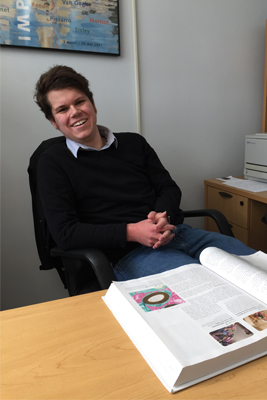Pioneering bullying researcher Dr. Dan Olweus once said, “It is a fundamental democratic right for a child to feel safe in school and to be spared the oppression and repeated, intentional humiliation implied in bullying.”
Are all children mentally and physically safe inside school premises in the United States? No, not according to research. A report from the National Center for Education Statistics stated that 20.8 percentage of 12-18-year-old students in the United States reported being bullied at school in 2015. This included both verbal and physical bullying where the victims were called names, made fun of, insulted, used as a subject of rumor, threatened harm, pushed, shoved, tripped, spat on, placed in uncomfortable situations and excluded from activities on purpose.
 As distressing as this statistic might be to most, one doctoral student went beyond just being emotionally IMG 8049disturbed by what was happening. He focused his research on the same topic and devised a guide for students, parents and teachers on how to stop a bully. He shared his knowledge with the community at a recent Discoveries in the Making session at The Abbey Coffee Shop.
As distressing as this statistic might be to most, one doctoral student went beyond just being emotionally IMG 8049disturbed by what was happening. He focused his research on the same topic and devised a guide for students, parents and teachers on how to stop a bully. He shared his knowledge with the community at a recent Discoveries in the Making session at The Abbey Coffee Shop.
“A lot of people think of bullying as just kids being mean to each other, but from a research perspective, it is repeated, intentional aggressive acts of a more powerful kid targeted on a less powerful kid,” said Jonathan Adams, a Ph.D. student in the Department of Psychology, who is primarily interested in kids’ well-being and the school environment. “Bullying peaks especially around middle school.”
Adams’ research showed that bullying involves power, which means a vulnerable and socially isolated student who is less powerful and cannot fight back or oppose the bullies usually gets targeted. Bullying can take different forms -- physical, verbal, relational and cyber, all of which can lead to depression and anxiety, lower achievement, higher absenteeism and poor physical health. Of the four, cyber bullying is relatively new because of the advent of technology.
“Cyber bullying usually happens via cell phones and other devices, predominantly on social media platforms for motives like fun or anger, and due to being disconnected from peers,” Adams said. “Bullying that used to happen in the real world has recently shifted to the virtual realms, as well. The only difference is no student is less or more powerful here.”
A primary concern for Adams was the number of students who missed school because of the fear of bullying. Oftentimes, victims do not report bullying incidents to parents or teachers and end up suffering in silence.
Adams described bullying incidents using Finnish researcher Christina Salmivalli’s terminology, ‘Power Theatre’.
“Its actors are powerful, and less powerful peers and audience are the bystanders who either encourage or discourage bullies,” Adams said.
Adams also looked at the psychology of bullies. Bullies usually hail from an aggressive background and are disconnected from school, according to his research. He said the latter could be a downside to punishments like suspensions. Since the bullies are already disconnected from school, missing classes might not discipline them. Instead, personal counselling is the best approach, Adams said.
It's also important to note that having these traits does not mean a student is a bully, he added.
Tips for students
By intervening, bystanders can discourage bullies from victimizing other students.
Victims and bystanders should report such incidents to adults rather than fearing the consequences of “tattling” since telling improves the situation.
Friends should always support the victims since they are in the same environment as the victims.
Tips for parents
Parents are often completely oblivious of the fact that their children are victims or perpetrators of bullying.
Parents need to frequently converse with their kids about bullying.
Parents should look for signs of victimization in their children like physical injuries or damage to books or clothes, as well as be aware of indicators like poor school performance and moody or anxious behaviors.
Tips for educators
Teachers should undergo training on how to identify or address bullying.
Administrators should come up with strict disciplinary policies and actions.
Since bullying tends to happen more often when students are left unsupervised, teachers should always monitor students in school.
Teachers should never ignore bullying.
They should always encourage students to report cyber bullying, even if the perpetrator is anonymous to the victim.
Always have strict rules and employ authoritative approaches for disciplining bullies.